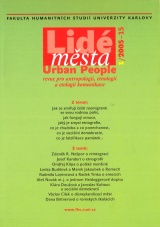Etnografické výzkumné techniky v Českých zemích a důsledky jejich používání
DOI:
https://doi.org/10.14712/12128112.3931Abstrakt
During most of the existence of their field, ethnographers were focusing mainly on older and Czech informants, thus strongly reducing the possibility of acquiring suitable data for a more objective picture of the national culture in the Czech lands. Team research has not changed this fact either. The situation was strongly codified by questionnaires focused on (or sent to) just a certain group of informants (usually teachers, chroniclers and people interested in na-tional history). The result of that were again data with a lesser value of relevance, not par-ticularly suited for qualitative analysis. The considerable restricting is also caused by the “narrow specialization” practice. Although it might be very useful for getting specific data on a particular topic, such specialization usually does not enable the researcher to employ a holistic approach. For example, there is a study about the use of Easter rattles in a single village. It contains descriptions of every type of rattle found, as well as the way it is used and who uses it. However, what the reader does not learn is that the inhabitants of the village were divided into two churches, one of which refused such amusement. Therefore, the rattling parties would only visit certain houses and the “practice” was not exercised by all inhabi-tants of the village, although they all knew it. Sadly, we begin to find that after more than one hundred and twenty years of ethnographic research, we have access to a huge amount of data on the cultural and somewhat on the social system of the Czech nation, but a great part of it bears little relevance, especially as far as the qualitative analysis and the interpretation of human behaviour is concerned.
Stahování
Publikováno
Jak citovat
Číslo
Sekce
Licence

Tato práce je licencována pod Mezinárodní licencí Creative Commons Attribution-NonCommercial-NoDerivatives 4.0.


